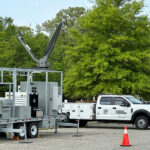Developers, always on the lookout for ways to add value to their properties, have seized on “building green” as a way to serve the public’s desire to shrink its own carbon footprint. There is an entire town in Kansas that had been leveled by a tornado and is now “rebuilding” green, and another town in Florida is built green from the ground up.
Another relatively recent phenomenon: Security-minded homeowners are preparing to barricade themselves in “safe” rooms and/or behind the walls of gated communities. These and other new security systems and processes add substantially to the value of a home – and, not incidentally, to its original construction cost.
What is missing in most if not all of these new green features is a focus on disaster-resistant housing and communities – i.e., homes and entire neighborhoods designed with features that improve the chances for survival of their occupants.
Even though these concepts may not always seem to be mutually supporting, the basics are so intertwined that they cannot be separated easily. One example of this is the green concept of living “off the grid” – i.e., by literally disconnecting one’s home from the power grid (and sometimes other critical infrastructures as well). A less extreme version would decrease the reliance on external sources – usually of energy.
A house with solar panels on the roof has a smaller carbon footprint; it also has a higher level of self-sufficiency if and when the power to the region is interrupted. This is one instance in which green technology also serves emergency-preparedness needs. Any technology that does not consume fuel (which produces carbon-rich exhaust) automatically lowers the carbon footprint (as long as the flow of that fuel is not interrupted).
Long-Range Planning vs. Overly Optimistic Assumptions
As with most other emergency-planning areas and practices, the planning for a disaster-resistant living should really start with individual homes and then expand to the community at large. Meanwhile, individual homeowners usually should start thinking about changing their way of living rather than focusing on contingencies for uncommon emergencies. As with most other aspects of emergency planning, setting up a day-to-day model that also can be applied to emergency situations is the key to success.
Space can be designed into houses for the storage of emergency food supplies. Every family having a year’s worth of supplies on hand would be better off, obviously, than having six-months’ worth, which is better than having a month’s worth of supplies, which is better than having a week’s worth. Unfortunately, because there are and probably always will be many citizens who wish, and then assume, that enough food supplies will be available each and every day, communities must also plan and work together to ensure the survival of the community.
The individual-family planning process must therefore be carried through to the community – whether that community is the local neighborhood or the whole town. Developers building large numbers of homes can help the process by including, in their construction plans, windmills for electricity or community wells to supply water when the community’s power and water infrastructures are interrupted.
Beyond being prepared for a possible loss of infrastructure, each region of the country must face its own specific hazards (tornadoes in Kansas, for example, and blizzards in Colorado and the Dakotas); this daunting challenge can be made easier by remembering that every hazard has a mitigation strategy that can be designed into both the individual houses and the entire community.
Although increased cost is frequently pointed to as the primary reason for not building greener or more resilient houses, the focus on cost alone ignores other factors that should be considered. The real tradeoff is the higher cost for initial construction vs. higher energy costs later and an increased risk of total loss during a disaster. Green homes aim at being off the grid; disaster-resistant homes, however, must by definition be able to do without the grid. For both, though, the mutual goal – and the common factor that unites them – is to be totally independent of the critical infrastructure.

Joseph Cahill
Joseph Cahill is the director of medicolegal investigations for the Massachusetts Office of the Chief Medical Examiner. He previously served as exercise and training coordinator for the Massachusetts Department of Public Health and as emergency planner in the Westchester County (N.Y.) Office of Emergency Management. He also served for five years as citywide advanced life support (ALS) coordinator for the FDNY – Bureau of EMS. Before that, he was the department’s Division 6 ALS coordinator, covering the South Bronx and Harlem. He also served on the faculty of the Westchester County Community College’s paramedic program and has been a frequent guest lecturer for the U.S. Secret Service, the FDNY EMS Academy, and Montefiore Hospital.
- Joseph Cahillhttps://domesticpreparedness.com/author/joseph-cahill
- Joseph Cahillhttps://domesticpreparedness.com/author/joseph-cahill
- Joseph Cahillhttps://domesticpreparedness.com/author/joseph-cahill
- Joseph Cahillhttps://domesticpreparedness.com/author/joseph-cahill






